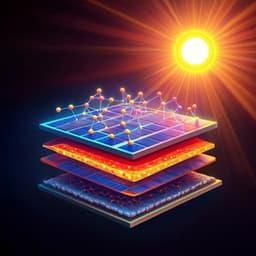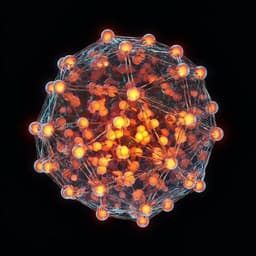
Engineering and Technology
Constructing molecular bridge for high-efficiency and stable perovskite solar cells based on P3HT
D. Xu, Z. Gong, et al.
Discover how a novel molecular bridge, MDN, enhances the performance of P3HT in perovskite solar cells, boosting power conversion efficiency to 22.87% and improving long-term stability. This groundbreaking research was conducted by Dongdong Xu, Zhiming Gong, Yue Jiang, Yancong Feng, Zhen Wang, Xingsen Gao, Xubing Lu, Guofu Zhou, Jun-Ming Liu, and Jinwei Gao.
~3 min • Beginner • English
Related Publications
Explore these studies to deepen your understanding of the subject.







